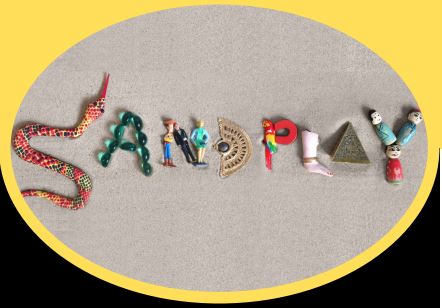Unit 1: Origins of Jungian Sandplay

Unit 1 / Seminar 1: Saturday, September 24, 2022; 9:30 am – 4:00 pm
History and Introduction to Sandplay
Presented by Gita Morena and Elizabeth Schofield-Bickford
Guest Speaker: Harriet Friedman
This seminar is a comprehensive introduction to the origins of Jungian sandplay. It will focus on sandplay’s history and Jungian underpinnings, as well as its application in clinical situations with children and adults. The course will include a discussion of the role of symbols in psychotherapy and sandplay, an identification of therapeutic change as seen in sandplay scenes, and the similarities and differences between sandplay and other treatment approaches. Building and maintaininga sandplay collection, keeping notes, and creating photos will be addressed, as well as how sandplay can be integrated with other treatment modalities. A discussion with STA founding member and Jungian analyst Harriet Friedman and a presentation of sandplay case material complete the day.
Learning Objectives:
- Describe the origins of sandplay therapy.
- Compare sandplay to sandtray therapy.
- Identify the theoretical underpinnings of Jungian sandplay.
- Explain the therapist’s role in sandplay therapy.
- Describe the benefits of creating a“free and protected space.”
- Describe the process of keeping photos, notes, and organizing materials.

Unit 1 / Seminar 2: Saturday, October 29, 2022; 9:30 am – 4:00 pm
Understanding the Sandplay Process
Presented by Gita Morena and Elizabeth Schofield-Bickford
Participants will learn how to introduce sandplay into a therapeutic session, as well as understand the significance of initial trays. Different approaches for interpreting the progression of trays in a sandplay process will be discussed, along with Martin Kalff’s “Twenty Points to be Considered in the Interpretation of a Sandplay,” and Rie Rogers Mitchell and Harriet Friedman’s identification of wounding and healing themes. Issues surrounding the training of sandplay therapists and ethical considerations for case presentations and supervision will also be included.
Learning Objectives:
- Describe primary characteristics of the sandplay process.
- Describe how sandplay can be beneficial in clinical practice.
- Give an example of when it would be appropriate to introduce sandplay in psychotherapy with adults.
- Give an example of healing themes in the context of sandplay therapy.
- Give an example of how themes of wounding can be seen in a sandplay tray.
- Describe the characteristics and importance of the initial tray.

Unit 1 / Seminar 3: Saturday, December 3, 2020; 9:30 am – 4:00 pm
The Language of Symbols
Presented by Marion Anderson
In this final seminar for the Origins of Jungian Sandplay series, important symbols, and categories for the creation of a sandplay collection will be discussed. The Jungian definition of a symbol, its roots in the archetypes, and its role as an expression of the psyche will be addressed, along with case vignettes to illustrate how symbols facilitate the connection of conscious and unconscious material. An experiential component will be included to demonstrate the personal and collective aspects of symbols and show how the process of amplification and association is necessary for understanding symbolic material. Finally, we briefly will reflect on the relationship of the sandplay therapist to the figures that appear in the case material.
Learning Objectives:
- Describe the differences between symbol and sign in Jungian psychology.
- Explain the role of the symbol in Jungian psychology.
- Identify the importance of symbols for sandplay.
- Describe the archetypal roots and collective use of small figurines.
- Compare the different levels of interpretation of a symbol.
- Analyze the personal and therapeutic components of a sandplay collection.

Unit 2: The Jungian Foundation of Sandplay

Unit 2 / Seminar 1: Saturday, January 24, 2023; 9:30 am – 4:00 pm
The Individuation Process as Described by Carl Jung
Presented by Liza Ravitz
This is the first seminar in the Jungian Foundation Series, which deals with Jungian theory and its application to sandplay. It will include an introduction to the concept of individuation, and an exploration of the psyche’s development over a lifetime to increase consciousness and develop a deeper connection to the unconscious. An emphasis on the Self as the organizing principle of the psyche will be included, and the ego-Self axis as the connecting link between consciousness and the unconscious will be identified. All concepts will be illustrated with examples from sandplay cases, and a sandplay case will be presented to illustrate the movement of psychic energy throughout a sandplay process.
Learning Objective:
- Describe what is meant by Jung’s concept of the Self.
- Identify images of the Self as they appear in sandplay scenes.
- Identify the function of the ego.
- Define the ego-Self axis.
- List 3 defining characteristics of a Self tray.
- Describe the components of a sandplay process.

Unit 2 / Seminar 2: Saturday, February 18, 2023; 9:30 am – 4:00 pm
Complexes and Shadow
Presented by Laura Soble
Jungian concepts of complexes, shadow, transference, and countertransference will be brought to life through images, sandplay case examples, and embodied experience in this day-long seminar. Participants will be encouraged to respond aesthetically throughout the day, and to have materials of their choice readily available for writing and art.
Learning Objectives:
- Describe what is meant by the Jungian concepts of complex and shadow.
- Describe what is meant by an embodied experience of transference or countertransference.
- Describe Jung’s concept of the therapeutic relationship.
- Describe Kay Bradway’sconcept of co-transference.
- Give an example of how a sandplay scene can reflect a patient’s complex.
- Give examples of how a clinician’s unconscious response to a patient can impact the therapeutic field.

Unit 2 / Seminar 3: Saturday, March 25, 2023; 9:30 am – 4:00 pm
Archetypes and the Transcendent Function
Presented by Shannon Yockey
This seminar will introduce the Jungian concept of the Transcendent Function, which facilitates the transition from one psychic condition to another by means of the mutual confrontation of the opposites. Archetypes, universal, primal symbols, and images that come from the collective unconscious will also be explored. We will focus on Jung’s primary archetypes of persona, anima, animus, and shadow and demonstrate common archetypal themes as father, mother, and child, through sandplay, art, and nature to assist in the learning process.
Learning Objectives:
- Describe what is meant by the Transcendent Function
- Describe what is meant by an archetype and give an example from clinical practice.
- Identify symbolic expressions of both the transcendent function and archetypal themes using sandplay case examples.
- Give an example of how to differentiate personal unconscious material from archetypal themes in the context of sandplay therapy.
- Describe the process of developing a relationship to the transcendent function in the context of sandplay.
- Describe what is meant by the personal unconscious vs the collective unconscious.

Unit 3: Jungian Sandplay with Children

Unit 3 / Seminar 1: Saturday, April 29, 2023; 9:30 am – 4:00 pm
Working with Children from a Jungian Perspective
Presented by Audrey Punnett
Play is an important part of child therapy and according to Winnicott, it is “only in playing that the individual child or adult is able to be creative and to use the whole personality, and it is only in being creative that the individual discovers the self.” (Winnicott, Play and Reality, p. 54) This seminar will look at some major differences in the kinds of play with children: the differences between ordinary and therapeutic play, child analysis and child therapy, and the unique characteristics of Jungian child therapy. A case will demonstrate the use of sandplay, play therapy and work with the parents around the symbolic manifestation of a tic disorder. To explore the images used in this case we will look at their meaning and the context in which they occur, as well as the child’s developmental phase of life, his position in the family, and the associations to relevant myths/fairy tales.
Learning Objectives:
- Identify the differences between ordinary play, play therapy, and Jungian child analysis.
- Discuss what Jung meant by the symbol and give an example from the case presentation.
- Identify a diagnosis and the importance of a working hypothesis of intervention.
- Using Neumann’s stages describe the stage of development of the boy in the case presentation, and the resultant challenges he faced.
- Identify the initial problem presented in the first tray and how to intervene with parents.
- Give an example of how to utilize the metaphors or stories from the child’s tray to intervene therapeutically.

Unit 3 / Seminar 2: Saturday, May 20, 2023; 9:30 am – 4:00 pm
Treating Trauma and Anxiety in Children with Jungian Sandplay
Presented by Elizabeth Schofield-Bickford and Sachiko Reece
The symbolic expression of anxiety and trauma as it appears in children’s trays will be demonstrated in sandplay case material. Unconscious and distressing feelings will be identified as they emerge and manifest through wounding themes, and create opportunities for healing in the sandplay process. The case of an 11-year African American boy from the inner city will be presented. He was exposed to drugs in utero and raised in the foster care system. The case articulates his struggles with managing his behavior, regulating his anxiety, and working with other affective states resulting from PTSD.
Learning objectives:
- Explain how Sandplay Therapy can foster affect regulation and facilitate treatment addressing trauma.
- Describe how the non-verbal method of sandplay and the verbal interaction in play therapy enhance each other.
- Describe some of the ways in which bodily symptoms can be seen through sandplay
- List the developmental stages of a sandplay process.
- List the clinical stages of a sandplay process.
- Give two examples of images of wounding in trays and their healing function in the tray.

Unit 3 / Seminar 3: Saturday, June 24, 2023; 9:30 am – 4:00 pm
Complex Clinical Issues with Children
Presented by Maria Ellen Chiaia
This last seminar of “Jungian Sandplay with Children” will address complex clinical issues in the sandplay processes of children and adolescents. The focus will be on the implications of the transference relationship, the importance of the free and protected space, and the need for silence. These concepts will be addressed and illustrated with clinical case examples and case presentations.
Learning Objectives
- Describe how to identify changes in transference relationships when working in the sand.
- Describe aspects of the transference relationship that are unique in the work with children.
- Describe what is meant by the importance of the free and protected space in the context of sandplay work.
- Describe a complex clinical issue in sandplay therapy with children.
- Explain the role of silence in therapy.
- Give an example of 2 different transference situations.





